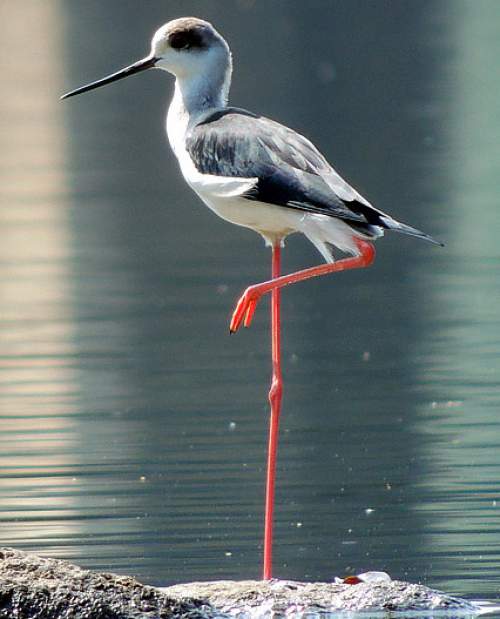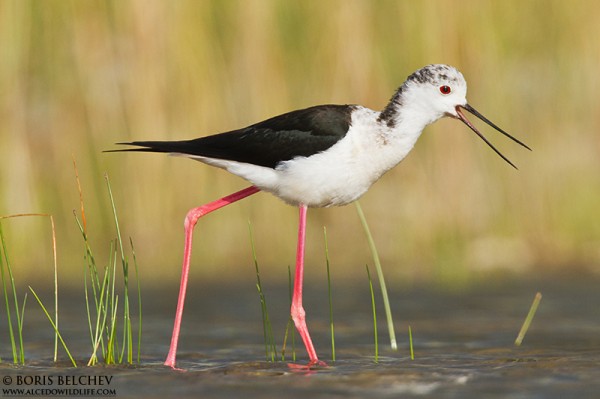
These stilts inhabit a range of wetland habitats, including freshwater and brackish marshes, lakes, lagoons, and estuaries. They are often seen foraging in shallow waters, probing the mud or sweeping their bills through the water to catch small aquatic invertebrates, crustaceans, insects, and small fish. Their long legs and slender bodies make them excellent waders and allow them to navigate through different water depths.

During the breeding season, male Black-winged Stilts perform courtship displays to attract females. These displays involve elaborate rituals, including posturing, head bowing, and aerial displays with exaggerated wing flapping and calls. Once a pair is formed, they build a nest on the ground using plant material and line it with feathers or other soft materials. Both parents take turns incubating the eggs and caring for the chicks.

The Black-winged Stilt is a highly migratory species in some regions, while in other areas, it may be resident or undergo only short-distance movements. Their migration patterns depend on the availability of suitable wetland habitats and food resources.

The conservation status for the Black-winged Stilt is generally of least concern, as their populations are widespread and relatively stable. However, habitat loss and degradation due to urbanization, pollution, and agricultural activities pose potential threats to their populations. Conservation efforts focus on the protection and management of wetland habitats, including the establishment of reserves and protected areas.

In summary, the Black-winged Stilt is a striking wading bird known for its long legs, black and white plumage, and elegant presence in wetland habitats. Their specialized adaptations for feeding and nesting in shallow waters make them fascinating species to observe. Protecting their wetland habitats is essential to ensure the continued survival of these graceful birds and the biodiversity they contribute to.





